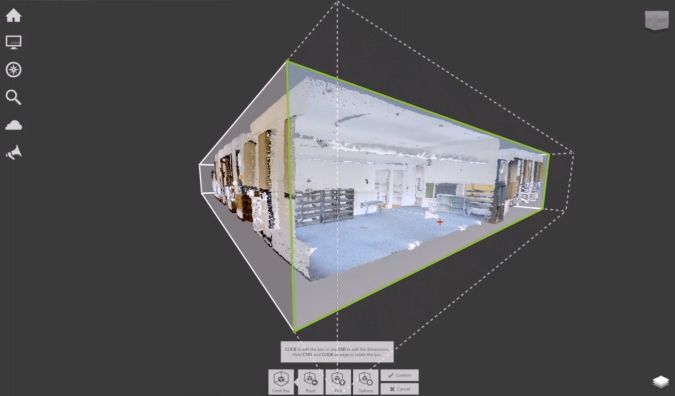Alley Poyner Macchietto Architecture (APMA) wanted to increase efficiency in both capturing the as-built conditions and the modelling process. The firm opted to use Matterport for reality capture of the current conditions and deliver a point cloud to architects using Revit. Read on to discover how this approach increased efficiency for project teams and achieved a more seamless integration of new team members and consultants.
The Challenge
Increase efficiency in both capturing the as-built conditions and the modelling process.
The Solution
Use Matterport for reality capture of the current conditions and deliver a point cloud to architects using Revit.
The Results
Increased efficiency for project teams, and a more seamless integration of new team members and consultants.
(This story is brought to you by Matterport)
Alley Poyner Macchietto Architecture (APMA) frequently works on historic rehabilitation and other complicated renovation projects, which require extensive 2D photographic documentation as well as manual measurements that are used to create a Revit(™) model. This documentation, along with the Revit model, are important parts of the design process, and are also critical tools to help communicate information about a project to stakeholders and team members. For historic rehabilitation projects in particular, photographic documentation is an important requirement for various funding mechanisms ranging from historic tax credits to HUD funding. While traditional methods of measuring and gathering visual documentation are often still required, the Matterport’s 3D camera allows design teams to collect this data in a more holistic way.
Using Matterport’s 3D camera, one person can capture sufficient photographic and dimensional data from most job sites in a single day. This data is then uploaded to Matterport’s Cloud platform, which generates an interactive online 3D walkthrough, a colorized point cloud (.xyz), and more in the same day.

APMA’s team is then able to download unlimited HDR visuals from any angle within the 3D walkthrough as well as take digital measurements. Additionally, APMA team members can quickly and easily construct the “as built” drawing by using the colorized point cloud as a tracing element in Revit. As an added benefit, APMA’s team is also able to add spatial annotations to provide additional details to collaborate with different team members. For APMA, this has increased efficiency by reducing the need for multiple return site visits. When new team members or consultants come on board, they’re able to quickly explore the site in detail using the Matterport’s output. The team also uses the Matterport scans to tour clients and other stakeholders through the building, offering a unique and interactive way to discuss project opportunities.
While originally APMA was using Matterport primarily for historical renovations, the success of the Matterport 3D camera has lead APMA to use it on many of their other projects. By using Matterport, APMA’s design teams can revisit a space as many times as necessary. It gives architects and interior designers another way to communicate with clients and team members and to share the vision and plans for a given space.
3D Reality Capture for Architectural Firms
Attend our upcoming webinar to discover how Alley Poyner Macchietto Architecture (APMA) uses Matterport on their residential, commercial, and historic rehabilitation projects to accelerate Revit modeling, replace 2D photographic documentation, and reduce costs.
About Alley Poyner Macchietto Architecture
Since 1987, Alley Poyner Macchietto Architecture has been producing architectural designs in a collaborative, creative, non-departmentalized atmosphere, where architecture is a way of life, not just a profession. The Matterport helps APMA increase collaboration by providing team members, clients and stakeholders with an easy-to-digest, interactive tour of a given space, making it easier to communicate project challenges and opportunities.
Matterport allows us to interact more frequently with the space – to confirm details, etc. - without having to leave our desks. We can also more efficiently incorporate new team members into a project and communicate project details to clients, allowing them to quickly tour a space and understand the design challenges it presents. ”
Jennifer Honebrink
Architect, APMA

